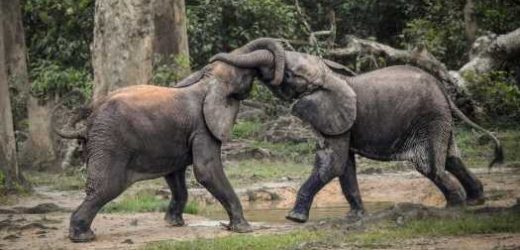While some African elephants parade across the savanna and thrill tourists on safari, others are more discreet. They stay hidden in the forests, eating fruit.
“You feel pretty lucky when you catch sight of them,” said Kathleen Gobush, a Seattle-based conservation biologist and member of the African Elephant Specialist Group within the International Union for Conservation of Nature, or I.U.C.N.
The threat of extinction has diminished the odds of spotting one of these wood-dwelling elephants in recent decades, according to a new I.U.C.N. Red List assessment of African elephants released Thursday. The Red List categorizes species by their risk of forever vanishing from the world. The new assessment is the first in which the conservation union treats Africa’s forest and savanna elephants as two species instead of one.
Both are in bad shape. The last time the group assessed African elephants, in 2008, it listed them as vulnerable. Now it says savanna elephants are endangered, one category worse.
The shy forest elephants have lost nearly nine-tenths of their number in a generation and are now critically endangered — just one step from extinction in the wild.
Led by Dr. Gobush, the assessment team gathered data from 495 sites across Africa. A statistical model let them use the elephant numbers from each site to see broader trends for both species.
“We essentially looked at data from as far back as possible,” Dr. Gobush said. The I.U.C.N. aims for three generations of data to get a full picture of an animal’s well-being. But for the long-lived elephants, that’s a challenge. The average savanna elephant mother gives birth at 25 years; forest elephant moms are 31 on average. Because the earliest surveys researchers could find were from the 1960s and 1970s, they could peer back only two generations for savanna elephants, and a single generation for forest elephants.
Even during those few decades, the changes were drastic. The population of savanna elephants has fallen at least 60 percent, the team found. Forest elephants have declined by more than 86 percent.
“That is alarming,” said Ben Okita, a Nairobi-based conservation biologist with Save the Elephants. Dr. Okita is co-chair of the conservation union’s African Elephant Specialist Group but did not work on the new assessment.
Dr. Okita said that considering the two elephant species separately was helping to reveal just how bad things are, especially for the forest elephant.
“The forest elephants, in most cases, have been largely ignored,” he said. Grouping the two elephants together probably masked just how bad things were for the forest elephant, he said.
The I.U.C.N. made the change because in recent years, “It’s become clear that genetically these two species are different,” Dr. Okita said. The final piece of evidence for the conservation union was a 2019 study it commissioned that showed the two elephants only rarely reproduce with each other.
Alfred Roca, a geneticist at the University of Illinois at Urbana-Champaign, said the I.U.C.N.’s recognition of two African elephant species was a little tardy. More than two decades ago, a study of 295 skulls in museums found “enormous differences” between the two types of elephants, he said. In life, forest elephants have smaller bodies, rounder ears and straighter tusks than savanna elephants.
Genetically, “The separation between them is probably greater than the separation between lions and tigers,” Dr. Roca said.
Still, he said: “It’s never too late. I’m delighted that they’ve done this, because it really highlights the terrible situation that the forest elephant is in.”
It will be especially hard for forest elephants to bounce back, Dr. Roca added, because of how long they wait to reproduce — six years longer than the savanna elephants. The I.U.C.N. assessment also found that 70 percent of forest elephants might live outside protected areas, leaving them especially vulnerable to ivory poachers.
Elephants being killed for their ivory tusks isn’t a new problem, and neither is the habitat loss they face.
“It’s the same two main threats that have afflicted the animals forever,” Dr. Gobush said. Poaching comes in waves, she added; it was especially severe in the 1980s and reached another peak in 2011.
Where elephants disappear, they leave a big gap — not just physically, but also in the work they do. Some tree species depend entirely on forest elephants to eat their fruits, swallow their large seeds and deposit them elsewhere in a pile of dung.
As they knock down trees and chew up huge amounts of plant material, both forest and savanna elephants change their environments in ways that create new habitat for other species.
“Both of them really could be considered gardeners tending to the vegetation, more than probably any other animal,” Dr. Gobush said. “We just can’t afford to lose them, really.”
But there is some good news.
Savanna elephants are “thriving,” Dr. Okita said, in the Kavango Zambezi Transfrontier Conservation Area, which overlaps five countries in southern Africa. In some parts of Gabon and the Republic of Congo, forest elephant populations have stabilized or even grown. Where people are protecting elephants against poachers and planning land use carefully, Dr. Okita said, there has been progress.
He wonders, though, whether reversing the African elephants’ decline will require not just policy, but also reaching people on a personal level and making them feel the urgency.
“At the moment we are getting to the minds of the people,” Dr. Okita said. “But we need to get to the hearts.”
Source: Read Full Article



